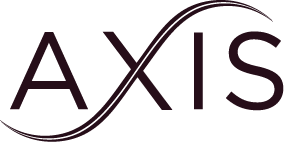This week, Axis co-presented the launch of the Prosperity Project’s 2025 Annual Report Card (ARC) on Gender Equity and Leadership’s results, and it was an evening of eye-opening data, thought-provoking conversation and insightful takeaways.
Since 2021, the Prosperity Project has been collecting Canadian data on women’s representation in leadership, and the report is the most comprehensive and only report in the country to track women’s representation across four levels of corporate leadership. At this week’s event, the Prosperity Project, alongside Axis, shared this year’s results, and the data shows both progress and concern.
“We learn more about the health of a system by its fractures, and that’s exactly what the Annual Report Card tells us today,” said Julie Savard-Shaw, Executive Director of the Prosperity Project, who was there presenting the results. “The overall picture looks steady, but look closer and you’ll see the fractures.”
2025 at a glance
The 2025 ARC showed that, overall, women in leadership inched forward from 42.7 per cent in 2024 to 43.4 per cent in 2025, but representation is still below the 2022 peak of 50.9 per cent. Female representation in two of the four leadership levels (senior managers and corporate directors) dropped in the last year, and although women in the pipeline to senior management level increased by 1.2 per cent in the last year, it’s 9.2 per cent less than it was only three years ago.
Across all leadership levels, Black women’s representation more than tripled from 0.6 per cent in 2021 to 1.9 per cent in 2025. Indigenous women experienced a decline from 3.1 per cent in 2021 to just 1 per cent in 2025. Women of colour (excluding Black and Indigenous women) saw the most significant increase, from 9.7 per cent in 2021 to 19.7 per cent in 2025.
In the last year, the representation of women with disabilities dropped from 5 per cent in 2024 to 3.4 per cent in 2025, and 2SLGBTQIA+ women increased slightly from 1.6 per cent in 2024 to 1.8 per cent in 2025.
Savard-Shaw explained that the weakening pipeline to leadership may not just signify a pause in progress, but it indicates a possible reversal. “At first glance, the aggregate numbers suggest stability, but a deeper look reveals that the foundational support for future leadership is eroding,” she said.
What can companies do?
The event concluded with a panel discussion between Savard-Shaw, Candace Newman, Senior Vice-President of People Services at Cenovus, and Dawn de Lima, Executive Vice-President of Corporate Services for TC Energy.
“There are things that we can do as an organization to help people and meet them where they are, and we just have to build that into the fabric of what we do and how we do it,” said Newman.
The panel highlighted some tangible actions that could help women’s workplace advancement, including checking internal bias; deliberating how your company recruits, and finding new ways to reach underrepresented groups in your recruitment; examining who is benefiting from your mentorship programs and ensuring they’re comfortable programs for all employees; partnering with organizations that are aligned with women’s professional advancement; and not taking your foot off the gas.
“We cannot take our foot off the gas — that’s one thing I’ve learned over the years. We’re never there. What is ‘there’? What is ‘we’ve made it’? Because we’ve never made it. There have always been groups of people who are underrepresented and misrepresented, so this really is a journey that will be led by people long past anyone in this room,” said de Lima.
Shifting internal work cultures was at the forefront of the conversation. Panelists and audience participants agreed it’s critical to ensure cultures promote the success of everyone, and sometimes that requires speaking up when you see discrimination, bias or microaggressions. Work flexibility consideration is equally important, and finding a balance that works for your company and your staff is key.
“I don’t believe that women need to go through the same hardship or heartache that I went through. You don’t need to suffer to advance,” said de Lima. “We, as a group of women and men who are allies, have a responsibility to make our workplace better for all of us.”
Savard-Shaw left the audience to contemplate its role in the future of women’s representation in the corporate landscape.
“We have a clear choice right now: Do we take action and make sure the pipeline to leadership is replenished? Or do we do nothing, or keep doing what we’re doing — which is clearly not enough — and risk having the exact same people around the decision-making table that we had 10 years ago?” she asked. “Canada’s prosperity really depends on having women of all identities at the decision-making table. The research is clear: the more women you have — and the more identities you have — around the decision-making table, the more profitable your company is and the better the economy is.”
Join the conversation on how to help strengthen the pipeline to leadership for all women. Become an Axis member today.

